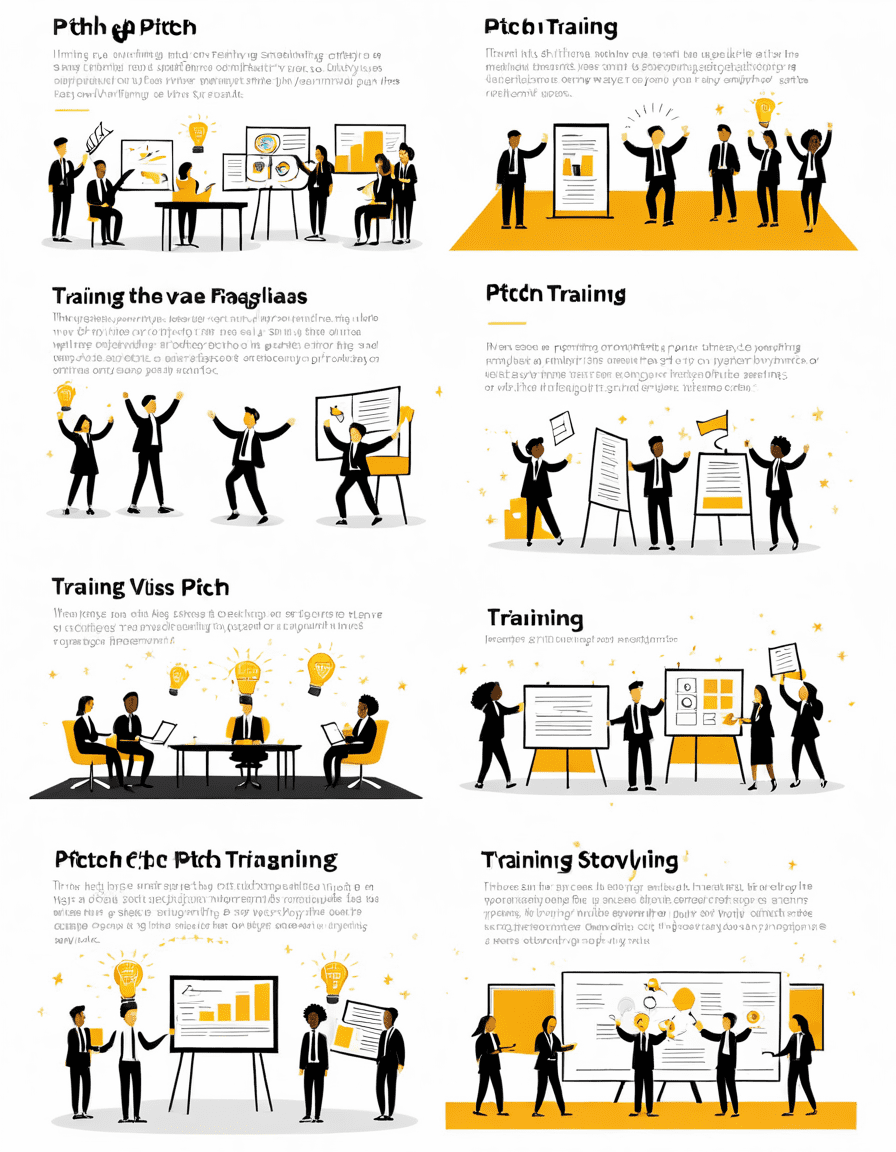
Unlocking the Power of Pitch Training
In today’s fast-paced business environment, having a killer pitch is not just beneficial; it’s essential. Whether you’re on the hunt for funding, selling your innovative ideas, or rallying your team around a fresh initiative, pitch training can elevate your approach. It polishes your message, boosts your confidence, and hones your authenticity as a speaker. Let’s be clear – mastering these skills can be the difference between a project that soars and one that crashes and burns.
Think about the last time you were in a meeting where someone struggled to convey their message. Frustrating, right? When you engage in effective pitch training, you get to sidestep those awkward moments by sharpening both your style and substance. This isn’t just about memorizing bullet points; it’s about controlling the room, generating excitement, and influencing perceptions. With the right training, you’ll command attention like Lorraine Toussaint captivates audiences with her performances, proving that mastery comes from practice and genuine connection.
So, buckle up! We’re diving deep into the essentials of pitch training. By the end of this article, you’ll not only feel inspired to take charge of your speaking career, but you’ll also have actionable strategies to leap forward in your journey.

Top 7 Pitch Training Techniques You Need to Master
Tailoring your pitch is crucial; it all begins with understanding who you’re speaking to. Remember when Dove launched its “Real Beauty” campaign? They nailed it by diving deep into the diverse beauty perceptions of their audience, delivering a message that truly resonated. Likewise, when you present, make sure your tone, language, and examples align with your listeners’ needs and pain points. Nothing builds rapport faster than hitting the nail on the head with a message that feels custom-made for them.
Let’s talk storytelling. Airbnb has discovered how narratives about hosts and guests create emotional connections that stick. You can’t just throw facts at your audience and expect them to stay engaged. Instead, practice transforming your data into compelling stories. You want your audience to relate to your message personally, almost as if they’re the star of your narrative. This is where impact lies – dive into their world and pull them in.
Visual aids can be game-changers in pitch training. Did you know research shows visuals significantly boost recall? Companies like Google utilize engaging visuals to demystify complex information, making it digestible. When constructing your pitch, incorporate visuals that align with your narrative. But hold your horses! Avoid cluttered slides; they should enhance your message, not overshadow it. Audiences often retain info better alongside visuals compared to just text or speech alone.
You don’t become a star overnight. Andrew Stanton, the mastermind behind Pixar’s storytelling, places plenty of emphasis on rehearsal. In your pitch training, dedicate solid time to practicing your delivery. Seek constructive feedback from peers or mentors. This practice-and-feedback loop will help you refine both your content and presentation style, identifying strengths and areas to sharpen. A strong pitch is rooted in repetition; practice like it’s an Olympic event!
Your non-verbal cues carry massive weight. Oprah Winfrey commands the stage not only with her words but with her powerful body language and vocal dynamics. In pitch training, focus on synchronizing your vocal modulation with expressive gestures. It’s about drawing your audience in and increasing overall engagement. A confident stance and dynamic voice can be your best allies, lending your message credibility and energy.
Let’s face it, objections happen. Mastering how to handle them is key to effective pitch training. Salesforce trains its sales teams to anticipate and address client concerns proactively, shifting potential negatives into positives. By role-playing various scenarios, you can prepare to dissect objections, maintaining your core message while navigating the tough questions. This preparation will boost your confidence, and more importantly, it shows you understand your audience’s concerns.
You want your audience to take action at the end of your pitch, right? Think of how Slack ends their presentations with powerful calls to action that demand direct engagement. In your training, put extra focus on crafting conclusions that encapsulate your pitch effectively. Summarize key points and propel your listeners toward a specific response or follow-up. This final nudge can turn a great pitch into something unforgettable.

Innovations in Pitch Training: The Future is Here
Brace yourself, folks! The pitch training landscape is evolving, bringing tech-savvy tools into the mix. Virtual reality (VR) platforms allow you to practice in simulated environments, facing audiences without the stress of real-world repercussions. Imagine pitching with an audience in your living room; it’s a game changer! Companies are tapping into AI-driven tools, providing real-time feedback specific to your examples and improving your presentation skills.
Moreover, collaborative software tools enable peer feedback on pitch delivery. You can connect with a broader audience for insights before you even step in front of potential investors or clients. As communication dynamics shift, integrating these innovations into your pitch training will not only refine your speaking prowess but also prepare you for the ever-evolving marketplace.
Mastering pitch training is about more than just memorizing a script. It’s about blending emotional intelligence, effective storytelling, and strategic communication. By applying these techniques, you position yourself as a persuasive force capable of influencing decisions and sparking action. Embrace these strategies to redefine your approach to pitch training. Your skills will transform from mere presentations into a powerful tool for career ascension and impactful leadership in your industry.
So, what are you waiting for? Now’s the time to step up your game in pitch training and ignite your career specifics. With every pitch you give, remember that you’re not just speaking; you’re impacting lives, influencing decisions, and shaping the future. Let’s get to work!

Pitch Training: Fun Facts and Trivia to Elevate Your Skills

The Evolution of Pitch Training
Did you know that pitch training has origins tracing back to theatrical performances? Presenters of old relied on voice modulation and body language, much like artists in The Mamas And The Papas inspired audiences with their iconic harmonies. Fast forward to today, pitch training is all about refining your message delivery, ensuring that your content resonates with audiences instead of drowning them in a sea of words. Speaking of resonating, a well-done pitch can create a butterfly effect, influencing your audience’s perception and driving their actions.
The Psychology Behind Pitching
Here’s a little trivia nugget: studies show that the audience’s emotional state can drastically change their perception of your pitch. Imagine showcasing your pitch during a time when folks might feel akin to being in an unhappy marriage—stressed and disengaged! Engaging pitch training programs focus heavily on audience impact, helping trainers understand how to connect with their listeners on a personal level. In this sense, each session combines psychology and performance, leveraging skills that can elevate your speaking game from novice to pro—even to the level of a seasoned keynote branding expert.
Pop Culture Influence and Pitch Training
Did you ever think about how pop culture might affect pitch training strategies? Picture a character like Exeggutor from Pokémon; it needs to adapt to different environments to thrive. Likewise, effective pitch training encourages speakers to be flexible, cultivating their unique styles to meet the demands of varying audiences. And just like the fictional gum gum fruit enhances characters’ abilities, pitch training empowers speakers to craft compelling narratives, captivating their audience from start to finish. So, whether you’re aiming for speaker growth or expanding your stylistic repertoire, tap into those fun influences around you—it might just transform your pitch into something legendary!










